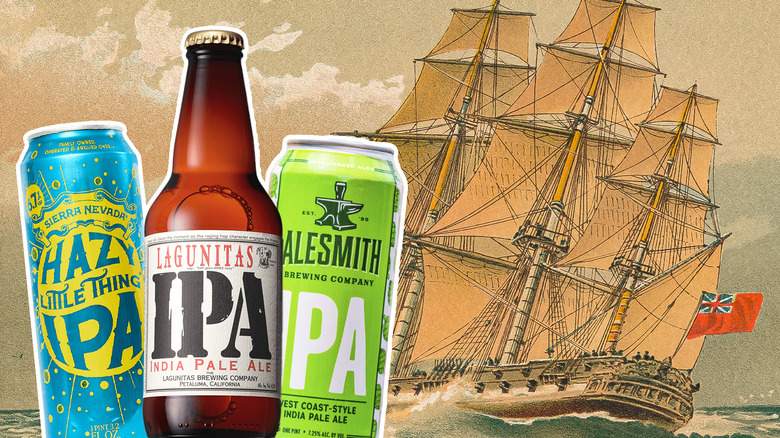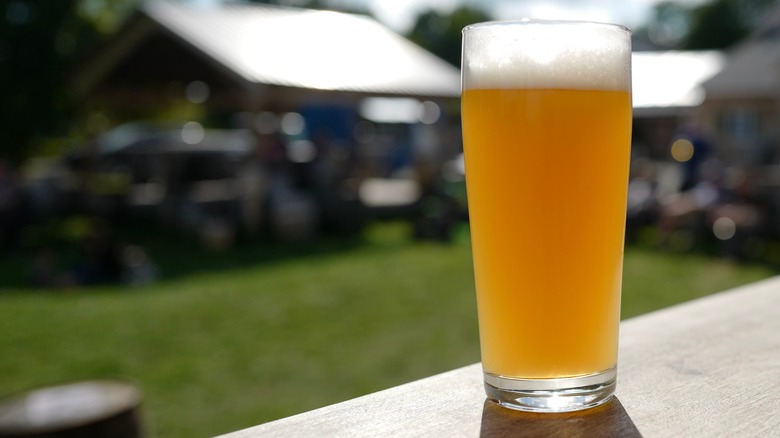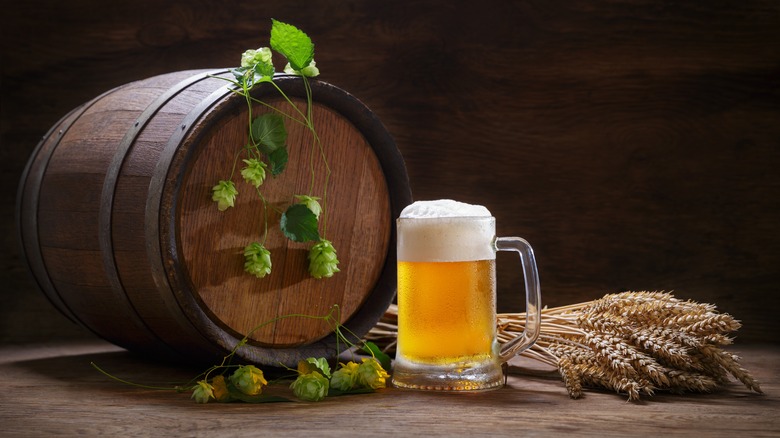The 18th Century Origin Of IPA Beer
The 21st century has been a boom period for beer thanks to the rapid proliferation of craft breweries. It's been hailed for bringing underrated styles of beer into the zeitgeist, driven by bold and creative brewers (although today, many 'craft' beers are actually connected to Anheuser Busch). Amidst this new brewing culture, no style has attracted more attention than IPA beer. Once obscure, it's become ubiquitous enough that everyone seems to have strong opinions. It's become one of those things that you either love or love to hate, its bold, bitter flavor inspiring both fans and detractors in seemingly equal numbers.
IPA is mainly defined by its hoppiness. Almost every style of beer is made with hops, but IPA has more than the average. This trait is central to the history of IPA, which dates back to the early 1700s. The most common version of the story goes something like this: When the British colonized India, they flooded the country with military troops. The Brits were accustomed to drinking porter, a style of beer that spoiled quickly in the hot Indian climate, if it even managed to survive the sea voyage from England. To navigate this problem, brewers began importing beers with more hops, which have antibacterial properties for preservation. The brew became synonymous with India, earning it the name, India Pale Ale. However, like most stories from the past, this one is packed with questionable details, and the true origins of IPA are as hazy as the brew itself.
The IPA legend
IPA's invention is most frequently attributed to a British brewer named George Hodgson. Hodgson's brewery was located just a few miles from the headquarters of the East India Company, which was ostensibly a trading corporation, but, in reality, served as the primary driving force of British colonization, using a private army hundreds of thousands strong to extract as much wealth from India as possible. Hodgson secured an exclusive contract to supply beer to the East India Company. Initially, he shipped them the classic porter, but upon recognizing the issues it presented, he realized he needed to make a change.
Many accounts claim that Hodgson carefully crafted IPA for this purpose, but it wasn't really a unique invention. Rather, he took his standard brew and added extra hops for exports to India. Much like the accidental invention of beer itself, luck played a big role in Hodgson's success. He likely didn't realize that, when he shipped off the beer, it wasn't actually done fermenting. During the sea voyage to India, it would continue to age in its cask, essentially doing the opposite of spoiling, and arriving at its destination in even better condition than when it left London. Upon arrival in India, Hodgson's beer achieved great popularity, and was soon being advertised in England as well. It's a nice story, but while Hodgson was undoubtedly instrumental in popularizing what would come to be known as IPA, in reality, he was far from the first to make it.
The real roots of IPA
Pale ales actually predate George Hodgson getting into the brewing business by decades. Their rise was prompted by industrial advances that made coal a viable fuel for roasting malt, allowing for a gentler roasting process that left the malt lighter. Such beers were being shipped to British forces in India by at least 1717, more than three decades before Hodgson opened his brewery. These were among the earliest light (rather than dark) beers. They weren't as heavily hopped as their descendants, but they laid the groundwork for what was to come. Plus, historians have cast doubt on the theory that less hoppy beers were really so badly suited to the hot Indian climate, and that the improvements from the extra hops were likely minimal.
Even still, the concept of adding extra hops to beer was not a Hodgson original, either. That practice dates back even further than pale ales, potentially as early as the 15th century, with the rise of a brew called barleywine, otherwise known as "October beer". Barleywine is aged for years, sometimes over a decade, giving it a very high alcohol content. To achieve this, brewers must add lots of sugary malt to feed the yeast used for fermentation. This would make the beer extremely sweet, so it's balance out with extra hops. Hodgson was likely inspired by this method, rather than inventing IPA from scratch. However, his near monopoly on British beer exports made his name synonymous with the bitter brew.


